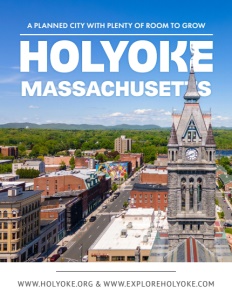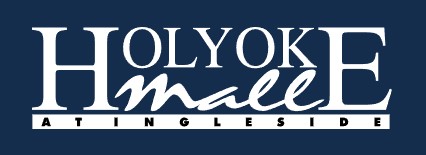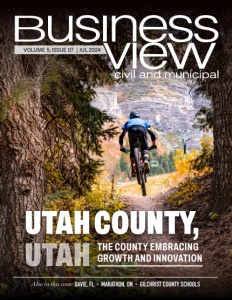Holyoke, Massachusetts
A planned city with plenty of room to grow
A dynamic municipality using its past to build its future
The dynamic city of Holyoke has a lot to be proud of. The city is also amidst a distinct transformation while keeping its roots close to its heart. Civic leaders are keen on reinvigorating the city’s industrial past while working to reclaim the once proud title of “Queen of Industrial Cities.”
Offering residents everything they need while going the extra mile to ensure it meets future growth, Holyoke is poised to enjoy a ripe future.
Going Green
“The assets that built this city 150 years ago – land, energy incentives, green technology, our location, our workforce – are the same things that are rebuilding the city,” says Director of Planning & Economic Development, Aaron Vega.
“Today, we’re trying to capitalize on those technologies, those innovations of 150 years ago that captured and harnessed the power from the Connecticut River. So, we’re focused on attracting companies that are either energy producers or producers of a product that reduces the carbon footprint or energy use. We’re working to capitalize on being a green community.”
One of the new, green industrial residents of Holyoke will be Sublime Systems, developers of a fossil-fuel-free, scalable, drop-in replacement for traditional cement used to make concrete. The company was given an $87 million award from the U.S. Department of Energy and will eventually produce tens of thousands of tons per year of its low-carbon cement on a 16-acre property that formerly housed paper mills and is powered by Holyoke’s robust hydroelectric resources — critical infrastructure for Sublime’s fully electrified cement manufacturing process. Sublime intends to create dozens of high-quality, benefits-bearing jobs throughout the construction and operation phases of its first commercial plant.
Another new Holyoke firm is Clean Crop Technologies, which specializes in advanced treatment for foods and seeds that reduce the molds, pathogens, and bacteria that destroy 500 metric tons of food and are responsible for 7% of GHG (greenhouse gas) emissions, every year. It is headquartered in a state-of-the-art, 14,000-sq.-ft. facility with several high-tech laboratories.
Clean Crop’s proprietary technology combines food-grade gasses and electricity to remove contaminants from seed and food surfaces without harming either and is ten times more energy efficient than incumbent technologies like chemical treatment and hot water.
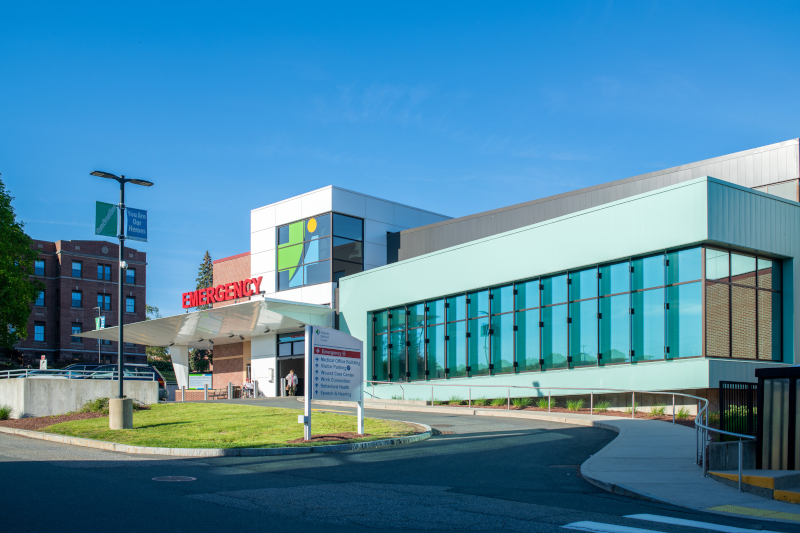
Government helps businesses thrive
Mayor Joshua Garcia believes that to attract new businesses to Holyoke, the city government has to operate smoothly and efficiently.
“Whether you are someone trying to start a business, or move a business here, it depends on a functioning government,” he claims. “So, we’ve done a lot in trying to make our local government competitive. We’re retaining our talent and building up departments that were severely under-resourced or understaffed. We focus on strengthening internal controls so that we can better leverage existing resources we have, as well as external revenue sources, such as grants so that we can expedite the work that we’re trying to accomplish. The idea is, that if we get our house in order, it will reflect positively, externally.”
“For any new business coming in, time is money. Folks are trying to figure out where to land, and if your community’s not together to help these folks navigate your internal bureaucracies, it tells a lot about your willingness to accept that organization so it can have a successful start and then grow and thrive. Today, there’s better communication between city departments and a lot of system improvements have allowed us to create the level of excitement that folks have been hearing from the outside looking in.”
Meanwhile, the city has also been helping some of its current small businesses. During COVID, it leveraged ARPA (American Rescue Plan Act) funds to keep some of its restaurants afloat, and it continues to support its downtown stores and eateries by featuring them on its Explore Holyoke website.
“We’ve got some great downtown shops and unique restaurants with authentic cultural menus. It’s free for them to promote on the site, and we have a social media intern that helps them,” Vega reports. “And we try to have events downtown that bring more people there – St. Patrick’s Day Parade, the Partonales Festival, the Paper City Food Festival in the fall. We’re trying to make sure that the businesses downtown know that we support them.”
“Another thing we’re trying to do is something as simple as making sure that downtown is clean and that trash is picked up – basic services that people expect, like public safety,” Garcia notes. “People want to feel safe when they’re walking and visiting establishments downtown. The infrastructure, streets, sidewalks, the conditions of the trees – those are all important little things that we’re responsible for. Our small businesses are trying to keep their doors open and keep business flowing. They pay taxes and expect good roads, good quality sidewalks, policing, and trash pick-up. Those are things that we’ve been focused on that are important to them.”
Both Garcia and Vega were born in Holyoke of Latino parents; Garcia’s mother and grandmother came to the United States from Puerto Rico, and Vega’s father hailed from Ecuador. Today, there is a growing number of Latinos, who like them, grew up in Holyoke, went to school there, and are now taking ownership of the local economy.
“You’re seeing this new surge of Latino-owned businesses: laundromats, small restaurants, bars, artist’s studios,” says Vega. “They’re bringing their cultural assets and their vigor, and their determination and grit to be small business owners, much more than previously. That’s exciting for me to see. And it’s really important when your community is 50% Latino.”
Building the workforce
Another agenda item for the administration is workforce recruitment and training. Since 1996, the MassHire Holyoke Career Center, a private, non-profit corporation has been serving the workforce and economic development needs of individual job seekers, business partners, and community and faith-based organizations; the KIttredge Center for Business and Workforce Development at Holyoke Community College offers dozens of business courses and job training programs; and the city is a partner in the Western Massachusetts Anchor Collaborative, led by Baystate Health, whose mission is to “advance economic opportunity for communities of color.”
“We’re also working directly with new companies like Clean Crop, Sublime Systems, and Xenox (a manufacturer of laboratory equipment and precision tools),” says Vega. “We’re identifying students, even at the high school level, who are interested in these fields, and giving them a pathway to go to Holyoke Community College. Springfield Technical Community College is also our partner where students can transfer into their manufacturing program, get a certificate, and get a living-wage job right away. It’s amazing to see what we’ve been able to do at the local level.”
Infrastructure is key
Regarding infrastructure, Vega reports that the city is currently working on several projects utilizing some state and federal grants. “We’re also in line, now, to redo and upgrade some of the intersections in our city,” he notes. “We have a major project being done by the state on our two main roads downtown, High and Maple Streets. The goal is mobility safety, but the secondary impact will be the look and feel – better visual quality. There are some bridge repair projects in the queue, and there’s a huge expansion of our Canal Walk. That’s going out to bid within the next 12 months.” Another road project to begin in 2025 will rehabilitate and resurface Cabot and Race Streets.
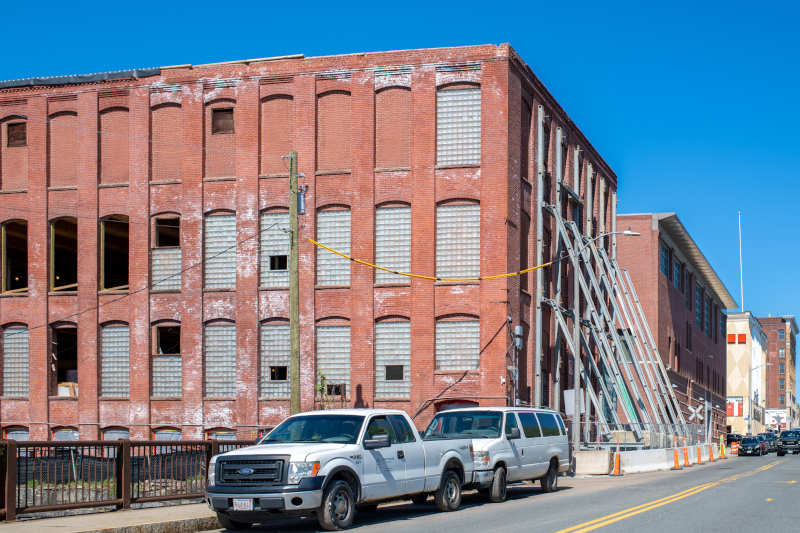
Housing a growing population
When Holyoke was first planned back in the 19th century, it aimed to accommodate 80,000 residents. With a current population of less than half that amount, the city is looking to grow. “We’re looking to grow our population with people who are ready to work,” says Vega. “And we need to make sure we have housing opportunities for all people as they move up the economic ladder.”
“When we talk about housing, it’s a wide spectrum of housing needs,” Garcia explains. “You’ve got your low-income housing, workforce housing, affordable housing, market-rate housing. If we’re going to achieve effective outcomes as we implement where we build housing, we have to think about it very comprehensively and understand what the housing needs are. We’re creating conditions in our city so as people’s circumstances improve, there’s suitable housing that meets their new standards. They don’t feel that they have to move out of the city. And there’s plenty of room for growth; there are properties offline that have been pursued by developers to put them back online and there’s room for development from the ground up. And the infrastructure is already here.”
One new development that will come online by the spring of 2025 is being shepherded by WinnDevelopment, a national housing company headquartered in Boston. It will repurpose an 86,000 sq. ft. section of the former Farr Alpaca Mill, a five-story industrial property on the Holyoke Canal that was once the largest alpaca wool mill in the world, and is one of Holyoke’s most prominent historic properties. The $55.3 million project will create the Residences on Appleton with 88 affordable apartments for those 55 and older. “And we will follow with improvements to the water, sewer, and streets,” says Vega.
Other projects coming on board include market-rate condo lofts aimed at young professionals who don’t want to own a home and several properties on High St. that, according to Vega, “will bring back those 8-20 unit apartment buildings with retail on the ground floor.” Another potential project is the repurposing of a large bank building on High St. for residential units. “And we have zoning in place which will allow for a live/work situation in a lot of mill buildings that are being turned over to residential,” he adds.
Helping the city with these projects is MassHousing, an independent, quasi-public agency created in 1966 and charged with providing financing for affordable housing in Massachusetts. The Agency raises capital by selling bonds and lends the proceeds to low- and moderate-income homebuyers and homeowners, and to developers who build or preserve affordable and/or mixed-income rental housing. Since its inception, MassHousing has provided more than $29 billion for affordable housing in the state.
“The timing is really good for us to have these shovel-ready projects,” Vega continues. “Some of the companies that are growing here in Holyoke have signed MOUs (Memoranda of Understanding) with some housing developers, saying ‘if you bring these properties online and you create this housing, we’ll commit to renting, three, four, six, eight, units of housing for our workforce.’ A developer can take that to the bank and get the project going.”
For older neighborhoods, the city has worked with MassWorks, which provides funds that support infrastructure and streetscape improvements across the Commonwealth. In 2019, it helped support a Holyoke Housing Authority affordable housing project in South Holyoke. A 90-unit development around Carlos Vega Park, consisting of 66 rental units and 24 homes, received $6.56 million to fund a new traffic configuration, stormwater bump-out planters with new trees, new curbing and sidewalks, landscaping, street lighting, bike lanes and pedestrian connections, improved alleyways, and a new 18,950 square-foot green space.
A plan for the future
Going forward, Garcia says that the city is poised to renew its comprehensive master plan, which hasn’t been revisited in 25 years. “A lot has changed since then,” he shares. “And as we go forward with doing the important work for the community, we’ll be doing it in the strategic direction that our community desires. There are things that we need to revisit in this process, such as zoning and ordinances that are limiting growth. This comprehensive planning is going to allow us to come together and understand that we’re going in the right direction.”
AT A GLANCE
Holyoke, Massachusetts
WHAT: A city of 38,000
WHERE: Hampden County in the southwestern part of the state
WEBSITE: www.holyoke.org / www.exploreholyoke.com
PREFERRED VENDORS
Meridian Industrial Group – https://meridianindustrialgroup.com/
Meridian Industrial Group (MIG) is a machining business that services customers in a variety of industries, including Space, Military, Power Generation and Medical Device. Our ability to machine parts that weigh as much as 30,000 lbs presents a unique ability to continue the rich history of manufacturing in Holyoke.

